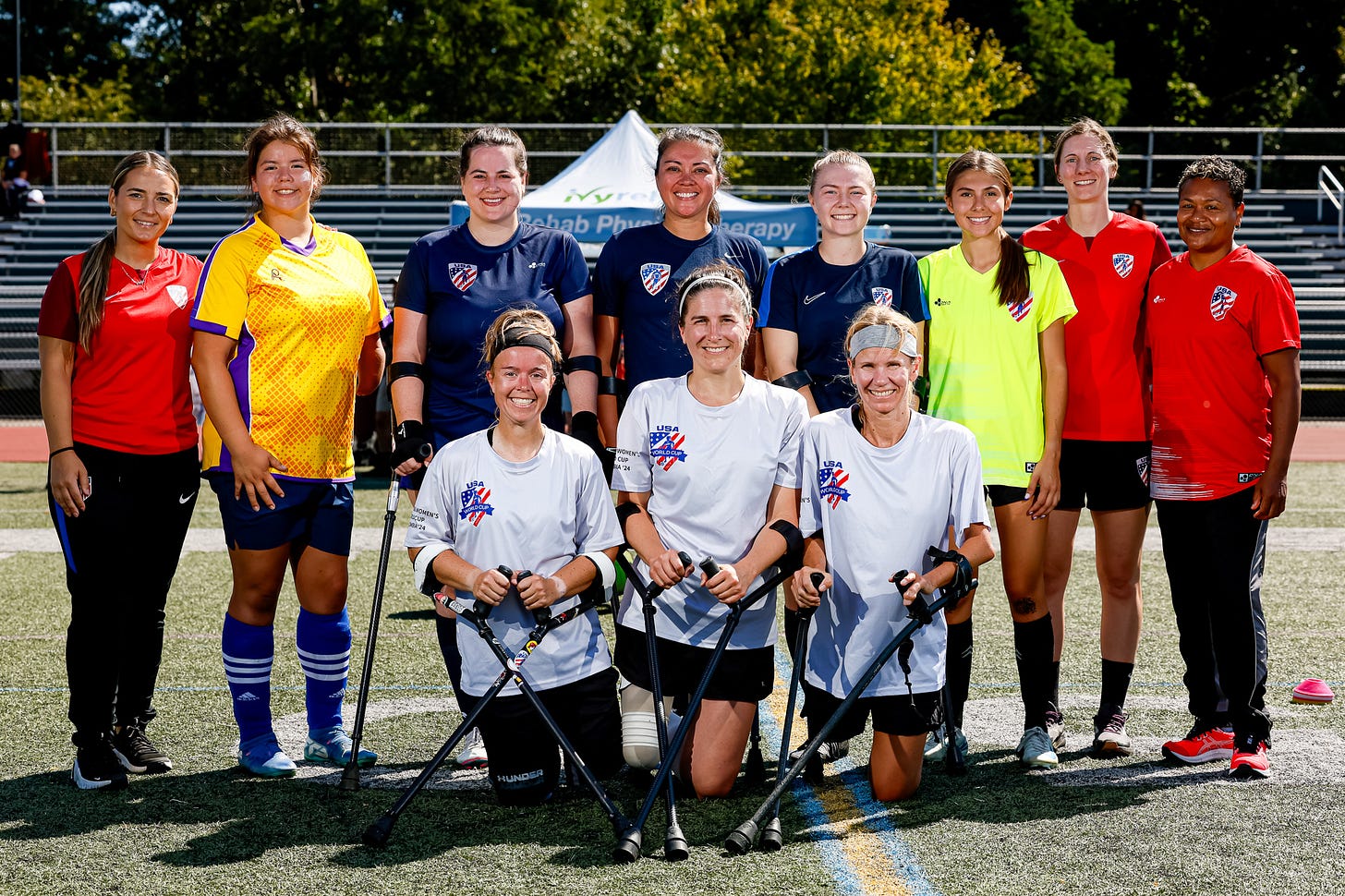Growing the Game of Amputee Soccer, One Player at a Time
“That game let others around the world say, ‘wow, maybe amputee soccer is something we should be doing for women.’”
Wendy Gideon is an amputee athlete who likes to push herself. An avid mountain biker and skier, she also competes in triathlons and has trekked solo through Nepal. If it’s physical and challenging, chances are Gideon wants to try it.
On September 13, she played in her first-ever soccer game.
“I’ve always wanted to do a team sport with other adaptive athletes, so this is sort of a lifelong goal,” she said. “I grew up in the 1980s and there were no adaptive sports for girls like me. In fact, there was a lot of exclusion.”
Gideon was one of eight women who competed in a set of women’s amputee soccer showcase games at the third annual U.S. Amputee Soccer Cup, held in Weymouth, Massachusetts. While female players have competed alongside men on Cup teams before, this was the first time the tournament featured games just for women.
In the United States, the number of people who play amputee soccer is growing every year, but it is still a very small community. The Amputee Soccer Cup is one of the sport’s biggest events, drawing city-based teams to a weekend-long tournament. Last year five teams were competing; this year, there were six. (For those keeping track, Miami has won the last two titles.)
But on the women’s side, the sport is still in its infancy. Very few women play amputee soccer in the United States. There are currently no local amputee soccer leagues or teams just for women. To practice and play, these athletes often have to travel to one of the 15 regional amputee soccer groups scattered throughout the country, groups that are made up mostly of men.
“It took us a long time to get the men’s game up to this level,” Eric Lamberg, the president of the American Amputee Soccer Association (AASA), said. “And we have to be patient to know that the women’s game will get there. It’s going to take some time to build. The same roadblocks that we had with the men, it’s going to happen with the women. We’ll get over them. And the more you play, the more you will get people who want to come and be part of it.”
Lamberg takes the long view because he has seen the continued growth of the sport on the men’s side. In 2014, he could only find 12 players to represent the United States at the World Amputee World Cup in Russia. It took time, outreach, and recruitment to grow the sport on the men’s side, but those efforts have steadily paid off, as the number of athletes playing the sport has increased every year.
When AASA formed its first women’s team in 2023, only four players showed up to the initial tryout. Through extensive recruitment — both via personal invitations and social media — AASA created a women’s team to compete against Poland in a showcase game at an international amputee soccer tournament for men. Poland defeated the U.S. 1-0 in that game, but Lamberg saw the contest — the first officially-sanctioned international women’s amputee soccer game ever — as a huge step forward for the sport.
“That game let others around the world say, ‘wow, maybe amputee soccer is something we should be doing for women,’” he said. “And it spurred the growth.”
A few months later, the World Amputee Football Federation announced the inaugural Women’s Amputee Soccer World Cup, to be held in Colombia in November 2024. Lamberg recruited players, held tryouts, and formed a team. The U.S. made it all the way to the finals before losing to Colombia in a penalty shoot-out.
Making it that far was a huge accomplishment, especially since many of the players had never played soccer before being recruited to join the team. “But they picked up the sticks and wanted to participate in this,” Lamberg stated.
Gideon says she learned about amputee soccer when one of the national team players reached out to her on Instagram and asked if she would be interested in playing. Not one to turn down a challenge, Gideon began preparing. She spent three weeks learning how to kick the ball, how to move quickly with forearm crutches on a turf field, and how to maneuver her body to allow her to dribble up the field.
By the time she arrived in Weymouth, she was ready to play. Her soccer IQ may have been a bit lower than the other players on the team — of the eight players in Weymouth, six had played in the Women’s Amputee Soccer World Cup in 2024 —but her teammates were supportive, both welcoming her to the sport and willing to teach her the finer techniques of the game.
“To experience this today is amazing,” Gideon said. “What a cool opportunity for all of these athletes to be out here and for me to be a part of it.”




